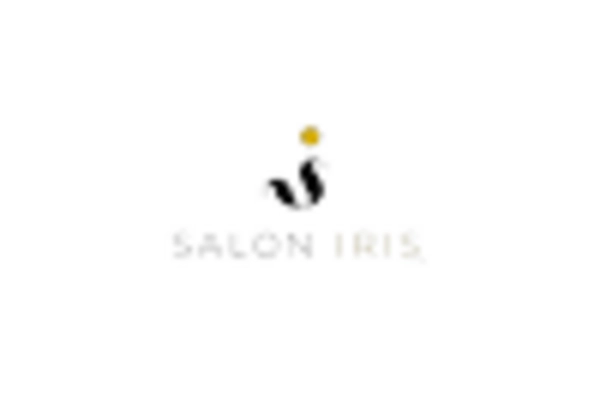Adoption of Cloud-Based Solutions
The Spa and Salon Software Market is witnessing a significant shift towards cloud-based solutions. These platforms offer numerous advantages, including scalability, cost-effectiveness, and remote accessibility. As more businesses transition to cloud technology, they benefit from reduced IT overhead and enhanced data security. Recent statistics suggest that the adoption of cloud-based software in the spa and salon sector has increased by over 40 percent in the past year. This trend is likely to continue as companies seek to streamline operations and improve service delivery, making cloud solutions a pivotal driver in the market.
Focus on Marketing Automation Tools
The Spa and Salon Software Market is increasingly focusing on marketing automation tools to enhance promotional efforts. As competition intensifies, businesses are leveraging software that automates marketing campaigns, social media management, and customer outreach. This approach allows spas and salons to engage with clients more effectively and efficiently. Recent findings suggest that companies utilizing marketing automation can achieve up to a 50 percent increase in lead generation. The growing recognition of the importance of automated marketing strategies is likely to drive the demand for comprehensive software solutions that cater to these needs.
Integration of Payment Processing Solutions
The integration of payment processing solutions within the Spa and Salon Software Market is becoming increasingly vital. As consumer preferences shift towards cashless transactions, spas and salons are adopting software that supports various payment methods, including mobile wallets and contactless payments. This transition not only enhances customer convenience but also accelerates transaction times, improving overall service efficiency. Market data indicates that businesses implementing integrated payment solutions can experience a 25 percent increase in transaction speed. This growing trend towards seamless payment processing is likely to propel the demand for advanced software solutions in the industry.
Increasing Demand for Online Booking Systems
The Spa and Salon Software Market experiences a notable surge in demand for online booking systems. As consumers increasingly prefer the convenience of scheduling appointments via mobile applications and websites, businesses are compelled to adopt software solutions that facilitate this process. According to recent data, approximately 70 percent of clients prefer online booking options, which has led to a significant shift in how spas and salons manage their appointments. This trend not only enhances customer satisfaction but also optimizes operational efficiency. Consequently, the integration of robust online booking features within spa and salon software is becoming a critical component for success in the industry.
Growing Emphasis on Customer Relationship Management
In the Spa and Salon Software Market, the emphasis on customer relationship management (CRM) is intensifying. Businesses are increasingly recognizing the value of maintaining strong relationships with their clients to foster loyalty and repeat business. Effective CRM tools enable spas and salons to track customer preferences, appointment history, and feedback, thereby personalizing services and marketing efforts. Data indicates that companies utilizing CRM systems can see a 30 percent increase in customer retention rates. This growing focus on CRM capabilities within software solutions is likely to drive market growth as businesses seek to enhance their customer engagement strategies.


















Leave a Comment